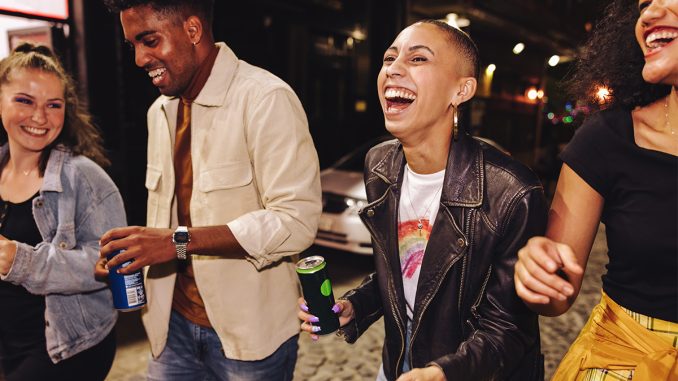
Some brands are better at connecting with Gen Z than others, and a new report from Launchmetrics suggests why.
A new study released Wednesday from the software, data and insights company sheds light on the strategies that have propelled certain brands to the forefront of Gen Z consumer consciousness. The report also identifies the most influential Gen Z voices and global celebrities who are driving brand visibility and engagement, offering insights into the changing landscape of brand performance.
The company found that collaborating with authentic Gen Z influencers is vital for cultivating connection. Gen Z has an appetite for comfort and ease, and tapping into values that matter is key, such as sustainability and inclusivity.
“It’s no surprise that Gen Z has been a top priority for marketers in recent years. This new generation of consumers is not only challenging traditional fashion marketing strategies but also rewriting its rules entirely,” said Alison Bringé, chief marketing officer of Launchmetrics. In the latest report, she said they took that into perspective by gathering a wide range of data since 2020 to demonstrate how brands were navigating this change and to see which strategies positioned brands at the top in connecting and cultivating communities.
“Our findings showcase how in today’s fast-paced digital world, staying agile means measuring data to your advantage to ensure your strategy and execution resonate,” said Bringé.
According to the study, premium brands have demonstrated the most gains in connecting with Gen Z.
Launchmetrics found that premium brands have seen the biggest growth in Media Impact Value (MIV) since the pandemic. The average growth in MIV among the top 20 premium brands since 2020 is 114 percent, compared to 69 percent for luxury brands and 62 percent for mass market brands.
In 2023, the top 10 premium brands in terms of MIV — 60 percent of which are American — are, in order, Skims, Calvin Klein, Levi’s, Lululemon, Coach, Michael Kors, Tommy Hilfiger, Birkenstock, Acne Studios and Diesel. Interestingly, Skims, which didn’t appear in the top 20 in 2020, now tops the charts with an MIV of $638 million, a 407 percent increase since 2020, according to Launchmetrics.
The study said that not only did Kim Kardashian propel Skims’ MIV through her own fame, but also through a wide array of celebrities such as Cardi B., Sza or Brazilian soccer player Neymar da Silva Santos Junior.
Comfort-first brands saw an average of 197 percent growth in MIV since 2020. Brands showing impressive spikes were Lululemon, Ugg, Skims, The North Face and Birkenstock, a testament to Gen Z’s prioritization and demand for comfort.
Birkenstock’s strong performance, for example, was credited to the “Barbie” movie, where Birkenstocks feature in the plot, as well as a Dior x Birkenstock release, which garnered $3.9 million in MIV in just one month of the release date.
In Piper Sandler’s recent spring survey, Coach was ranked as Gen Z’s favorite handbag brand. The brand garnered $355 million in MIV in 2023, and was one of only two lifestyle brands known for their handbags in the top 20.
In the mass market, sportswear took the limelight, with seven out of the top 20 top brands together generating $7.5 billion in MIV — 42 percent of the total MIV generated by the top 20. Nike led the rankings with $2.8 billion in MIV in 2023.
The top three mass market brands — Nike, Adidas and Zara — represented 40 percent of the total MIV generated in 2023, with $7.3 billion in MIV last year alone. According to Launchmetrics, they have stayed relevant among young consumers by cultivating community and collaborating with voices that resonate with their target audience. Rounding out the top 10 were Shein, Uniqlo, H&M, Fashion Nova, New Balance, Puma and Mango. Influencers have been driving MIV for mass market brands, Launchmetrics said, as have celebrities.
The top 10 luxury brands for 2023 were Dior, Chanel, Louis Vuitton, Gucci, Prada, Saint Laurent, Armani, Fendi, Versace and Valentino. Dior and Chanel have maintained their top spots over the years with 73 percent and 54 percent growth in MIV, respectively, from 2020.
In fact, the top 20 luxury brands have seen a substantial gain in MIV since the COVID-19 pandemic, representing an average of 69 percent in MIV in just three years. And brands are placing more resources and efforts on celebrities and influencers, which are driving MIV for premium and luxury brands, to connect with younger audiences.
Launchmetrics said the media voice was the largest at $12.8 billion, up from $9.7 billion in 2000.
For luxury brands, the media voice also remained the most prominent since 2020 at $39 billion, up from $32.2 billion in 2000. Influencers clocked in at $14.4 billion, up from $5.2 billion in 2020, while the celebrity voice was $7.6 billion, up from $1.7 billion in 2000.
Among the top 20 Gen Z-aged influencers globally for all fashion and sportswear segments were Mia Khalifa ($73 million in MIV), Lena Mahfouf ($67 million in MIV) Kylie Jenner ($63 million in MIV), Valeria Lipovetsky ($62 million in MIV), and Priscilla Escoto ($45 million in MIV).
SOURCE: Women’s Wear Daily

